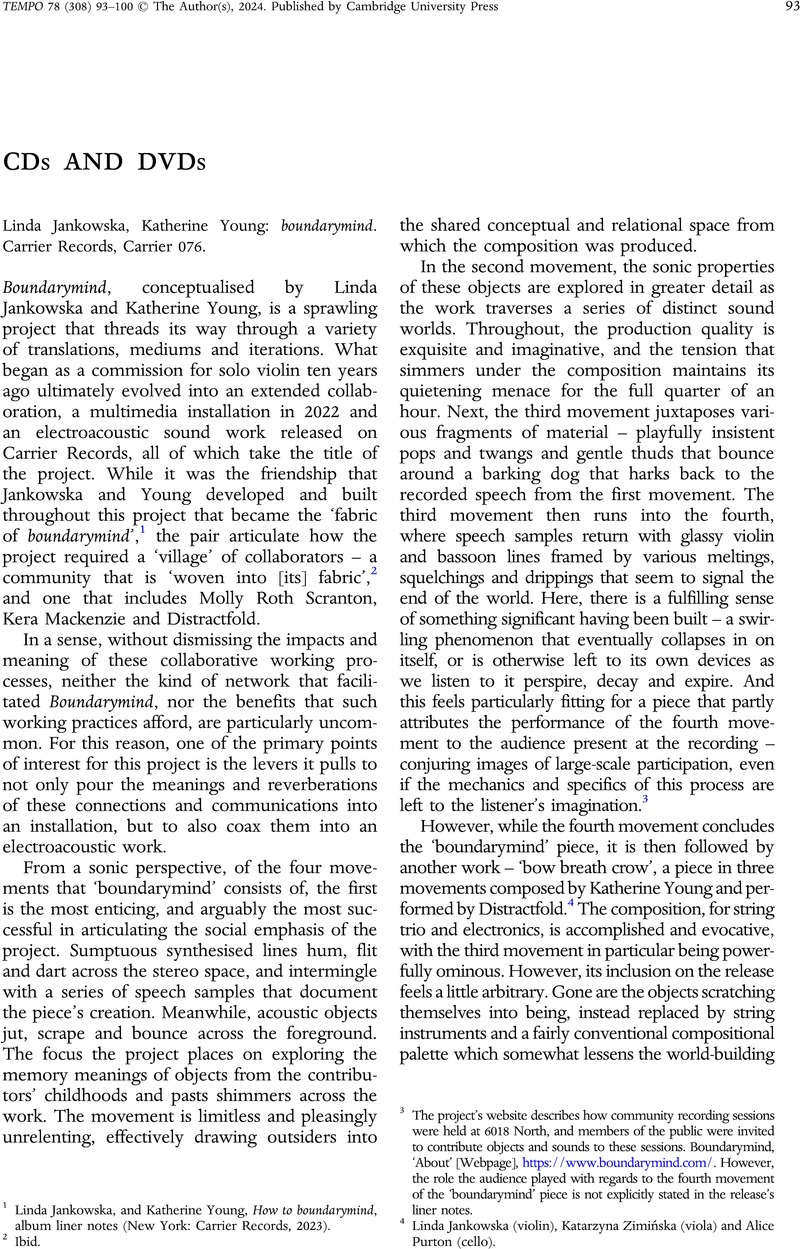No CrossRef data available.
Published online by Cambridge University Press: 01 April 2024

1 Jankowska, Linda, and Young, Katherine, How to boundarymind, album liner notes (New York: Carrier Records, 2023)Google Scholar.
2 Ibid.
3 The project's website describes how community recording sessions were held at 6018 North, and members of the public were invited to contribute objects and sounds to these sessions. Boundarymind, ‘About’ [Webpage], https://www.boundarymind.com/. However, the role the audience played with regards to the fourth movement of the ‘boundarymind’ piece is not explicitly stated in the release's liner notes.
4 Linda Jankowska (violin), Katarzyna Zimińska (viola) and Alice Purton (cello).
5 ‘bow breath crow’ was the first collaboration between Jankowska and Young, and was intended to be an integral part of the show they were in the process of planning.
6 Whereas, in contrast, the video documentation of the installation element of boundarymind is able to bypass these concerns.